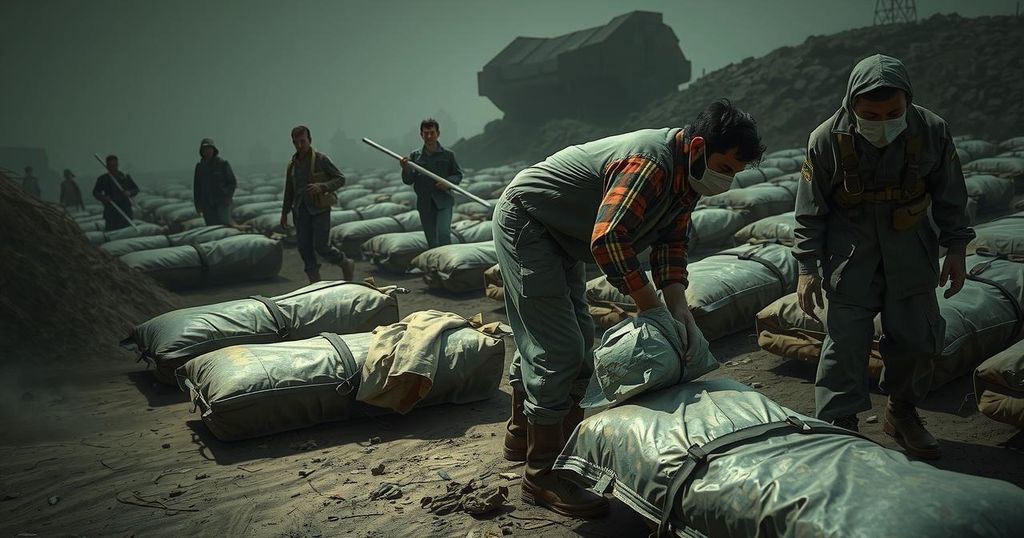Trump Misuses Congo Footage as Evidence of South African Violence

President Trump’s Oval Office meeting with South African President Cyril Ramaphosa featured misleading claims regarding violence against white farmers in South Africa, using an image from Congo instead. The footage depicted humanitarian efforts after conflict, not evidence of the alleged genocide. This misrepresentation highlights ongoing racial tensions and the importance of accurate reporting in international relations.
In a recent Oval Office meeting, U.S. President Donald Trump displayed a screenshot of a Reuters video he incorrectly claimed illustrated the killings of white farmers in South Africa. The image, he presented, was actually footage from the Democratic Republic of Congo, specifically from Goma, taken during humanitarian efforts following violent clashes with Rwandan-backed M23 rebels. Despite being shown to President Cyril Ramaphosa, the truth about the image was overshadowed by Trump’s assertions.
The video, published on February 3 by Reuters, captured humanitarian workers handling body bags after an M23 assault. As confirmed by Reuters, the article Trump referenced was shared by American Thinker, a conservative outlet that critiques South Africa’s policy on land and race relations. The article did not provide a proper attribution for the image but claimed it was a screenshot from a YouTube video covering the humanitarian crisis in Congo.
The White House has yet to offer any official comment regarding the situation. Andrea Widburg, the managing editor at American Thinker, acknowledged Trump’s error in using the image but noted that the blog post highlighted ongoing issues faced by white South Africans. She referenced the growing pressures placed on the white community in South Africa without supporting the narrative suggested by Trump’s claims.
Djaffar Al Katanty, the Reuters video journalist who filmed the footage, expressed his surprise upon seeing that Trump utilized his work to substantiate a narrative about violence against white individuals in South Africa. “It was shocking. I had to negotiate to film in that area; only Reuters had coverage of that event,” Al Katanty explained. His footage represented the tragic reality of the conflict in Congo, not the alleged acts Trump suggested were occurring in South Africa.
While Ramaphosa was in Washington to mend U.S.-South Africa relations—amid Trump’s critiques of the nation’s land reform and treatment of white citizens—Trump played a video he claimed illustrated genocide against white farmers in South Africa. This commentary is tied to longstanding conspiracy theories that circulate in certain political circles, insisting that white South Africans face systematic violence by the Black majority. Trump reiterated, using dramatic language, the extent of this so-called crisis, describing it as “death, death, death, horrible death.”
This incident serves as a potent reminder of the complex interplay between political narratives and the portrayal of racial tensions in both South Africa and the broader African continent. Misrepresentation of such images can perpetuate harmful stereotypes and fuel tensions where they may not exist. As both countries continue to navigate their diplomatic relationship, clarity and accuracy in communication remain vitally important.
The incident involving President Trump presenting misleading images during his meeting with President Ramaphosa underscores the dangers of misinformation in political discourse. The footage from Congo, utilized to falsely frame a narrative about violence in South Africa, highlights ongoing tensions and misrepresentations surrounding race and land policies in the nation. Accurate portrayal of facts is crucial for constructive dialogue and understanding as both nations aim to strengthen their relations.
Original Source: www.newsbreak.com







